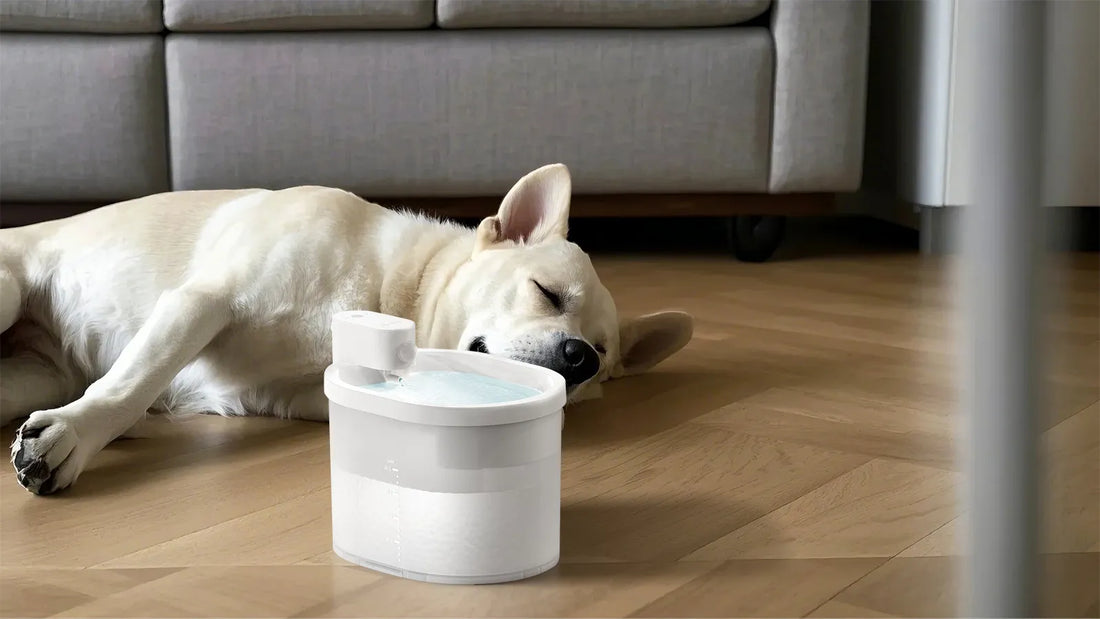When it comes to caring for your furry friend, choosing the right dog feeding bowl is more important than you might think. From materials and designs to functionality and hygiene, the perfect bowl can make a significant difference in your pet's health and happiness. Let's dive into the world of dog feeding bowls and explore how to select the best one for your canine companion.
Why the Right Dog Feeding Bowl Matters
Dog feeding bowls are not just containers for food and water; they play a crucial role in your pet's overall well-being. The right bowl can encourage healthy eating habits, prevent spills, and even reduce the risk of certain health issues. For instance, elevated bowls can aid digestion, while slow-feed bowls can help prevent overeating. Understanding your dog's needs is the first step toward making an informed choice.
Types of Dog Feeding Bowls
There are several types of dog feeding bowls available, each designed to meet specific needs. Here are some popular options:
Stainless Steel Bowls
Stainless steel bowls are durable, easy to clean, and resistant to bacteria. They are an excellent choice for pet owners looking for a long-lasting and hygienic option.
Ceramic Bowls
Ceramic bowls are stylish and heavy, making them less likely to tip over. However, they can be prone to chipping and may harbor bacteria if not cleaned properly.
Plastic Bowls
Plastic bowls are lightweight and affordable but can scratch easily, creating spaces for bacteria to grow. They are best suited for pets without a tendency to chew or scratch their bowls.
Slow-Feed Bowls
Slow-feed bowls are designed with ridges or mazes to slow down eating, which can be beneficial for dogs that tend to eat too quickly.
Elevated Bowls
Elevated bowls are raised off the ground, promoting better posture and digestion. They are particularly useful for larger breeds or older dogs with joint issues.
Factors to Consider When Choosing a Dog Feeding Bowl
Selecting the right dog feeding bowl involves more than just picking a material or design. Here are some key factors to keep in mind:
Size and Capacity
The size of the bowl should match your dog's breed and eating habits. Larger breeds will need bigger bowls, while smaller dogs may do well with compact options.
Ease of Cleaning
Hygiene is paramount when it comes to dog feeding bowls. Choose a bowl that is easy to clean and dishwasher-safe if possible.
Durability
Consider your dog's behavior. If your pet is a chewer or tends to be rough with their bowls, opt for a more durable material like stainless steel.
Non-Slip Base
A non-slip base can prevent the bowl from sliding around, making mealtime less messy and more enjoyable for your dog.
Design and Aesthetics
While functionality is essential, the design of the bowl can also complement your home decor. Choose a style that suits your taste while meeting your dog's needs.
Maintaining Hygiene in Dog Feeding Bowls
Keeping your dog's feeding bowl clean is crucial for their health. Bacteria can build up quickly, leading to potential health risks. Here are some tips for maintaining hygiene:
Daily Cleaning
Wash your dog's bowl with warm, soapy water after every meal. This helps remove food residue and bacteria.
Weekly Deep Cleaning
Once a week, give the bowl a thorough cleaning with a pet-safe disinfectant. This ensures that any lingering bacteria are eliminated.
Inspect for Damage
Regularly check the bowl for cracks, chips, or scratches. Damaged bowls can harbor bacteria and should be replaced immediately.
Special Considerations for Puppies and Senior Dogs
Puppies and senior dogs have unique needs when it comes to feeding bowls. Puppies may benefit from smaller, shallow bowls that are easy to access, while older dogs might require elevated bowls to reduce strain on their joints. Always consider your dog's age and physical condition when selecting a bowl.
Eco-Friendly Options
For environmentally conscious pet owners, there are eco-friendly dog feeding bowls made from sustainable materials like bamboo or recycled plastic. These options are not only better for the planet but also safe for your pet.
Common Mistakes to Avoid
When choosing a dog feeding bowl, avoid these common pitfalls:
Ignoring Your Dog's Preferences
Some dogs may have specific preferences for certain materials or designs. Pay attention to your pet's behavior to determine what works best for them.
Overlooking Hygiene
Neglecting to clean the bowl regularly can lead to health issues. Make hygiene a priority.
Choosing Style Over Functionality
While aesthetics are important, functionality should always come first. Ensure the bowl meets your dog's needs before considering its appearance.
Tips for Transitioning to a New Bowl
Switching to a new feeding bowl can be a challenge for some dogs. Here are some tips to make the transition smoother:
Gradual Introduction
Introduce the new bowl gradually by placing it next to the old one. This allows your dog to get used to it without feeling pressured.
Positive Reinforcement
Use treats and praise to encourage your dog to use the new bowl. Positive reinforcement can make the experience more enjoyable.
Patience is Key
Be patient and give your dog time to adjust. Some dogs may take longer to accept a new bowl, but with consistency, they will eventually adapt.
Choosing the right dog feeding bowl is an essential part of pet care that can significantly impact your dog's health and happiness. By considering factors like material, size, and hygiene, you can find the perfect bowl that meets your pet's needs. Whether you opt for a stainless steel, ceramic, or eco-friendly option, the right choice will ensure your furry friend enjoys every meal to the fullest.













